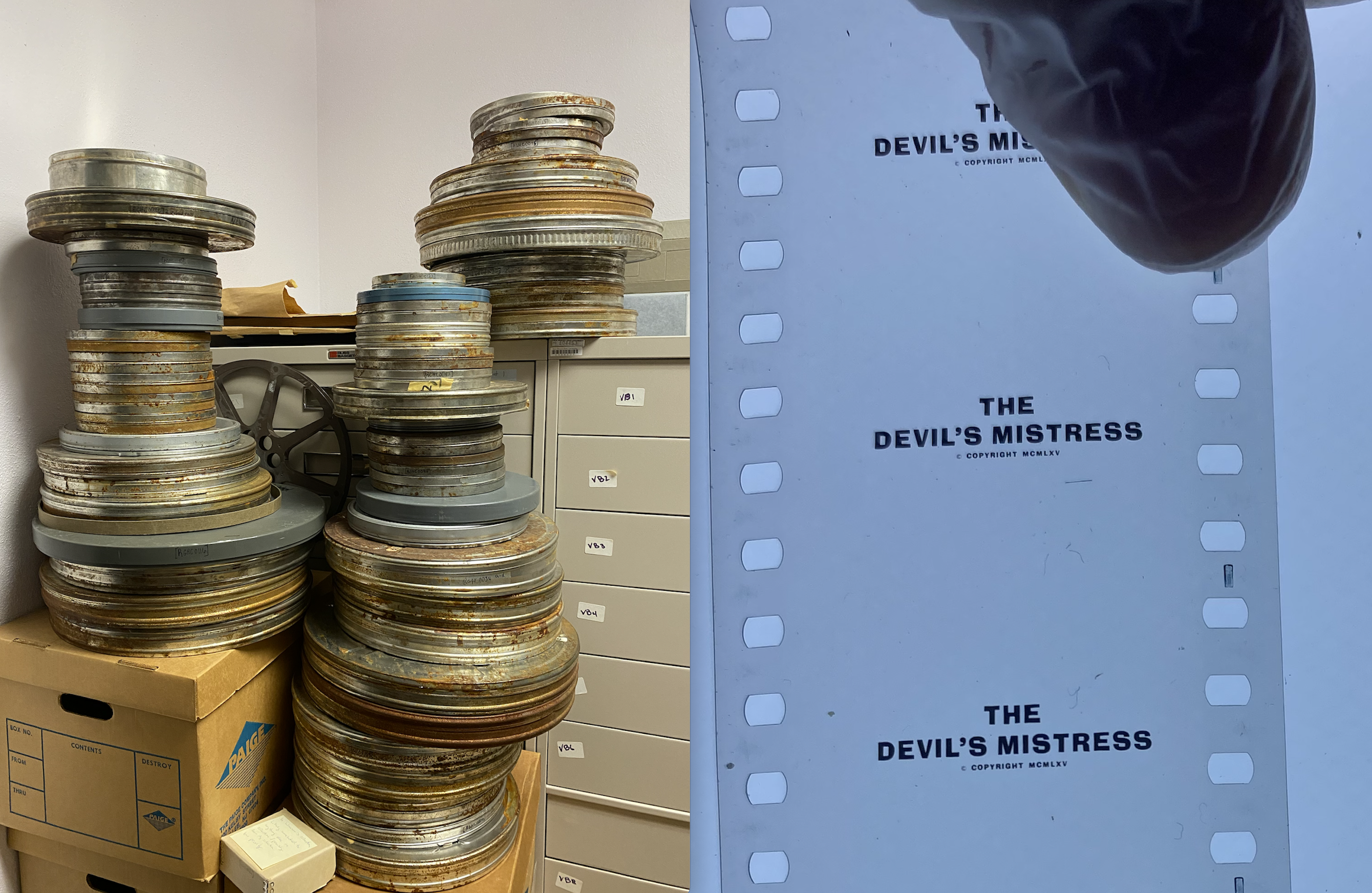-and-
By the end of last summer, visiting professor Julia Smith, had digitized more than 10,000 feet of film, in partnership with The Institute of Historical Survey in Mesilla Park.
Source: NMSU Newsroom
Photo: Courtesy
A Southwest Border Cultures Institute (SBCI) grant last year gave a much-needed boost to support Julia Smith’s efforts to restore and digitize the films of the late Orville Wanzer, a pioneering yet under-recognized filmmaker from the 60s, 70s and 80s whose influence helped shape the evolution of “the modern western” and independent avant-garde cinema in the United States, particularly in the borderland region.

Wanzer was hired as a New Mexico State University English professor in 1959. He also taught photography, film history and created the first filmmaking program at NMSU. Wanzer died in 2019 at age 88.
[Photo: Orville Wanzer, late NMSU professor and pioneering filmmaker from the 60s, 70s and 80s, whose influence helped shape the evolution of “the modern western” and independent avant-garde cinema in the United States.]
“This will provide a huge insight into film culture in New Mexico,” Smith said. “It’s a window to the past, an unexamined look into the film history, not only of NMSU and Las Cruces but the state of New Mexico is in this collection of never-before-seen NMSU films.”
Smith, a visiting assistant professor in the NMSU Department of English and Gender and Sexuality Studies, conducted extensive work at NMSU’s Rio Grande Historical Collections (RGHC) with the help of the SBCI grant. She assessed the visual content of all 142 containers in the Wanzer collection and took steps to ensure their long-term preservation. She has spent the last five years scanning almost half of the collection, mostly on a volunteer basis.

Her work included repairing, re-splicing and rehousing the fragile reels into archival storage and digitizing about half of the films.
“The Southwest Border Cultures Institute’s support was pivotal,” Smith said. “It allowed me to dedicate myself fully to preserving Wanzer’s groundbreaking work, elevating New Mexico’s unique contributions to film history, and laying the foundation for my documentary, ‘Birth of the Acid Western.’”
By the end of last summer, Smith had digitized more than 10,000 feet of film, in partnership with The Institute of Historical Survey in Mesilla Park. Since launching this collaborative effort in 2019, she has successfully digitized approximately 70 films, ensuring Wanzer’s artistic legacy endures for future generations.
“These discoveries underscore Wanzer’s importance as a pioneering yet overlooked figure in U.S. film history,” Smith said. “And the fact that his story begins here in Las Cruces, at NMSU, makes it all the more meaningful.”
Smith credits her success to a collaboration with Michael Walsh, a renowned film archivist and filmmaker.
“Michael’s mentorship was instrumental in navigating the complexities of this massive undertaking,” Smith said. “With no film archivist on staff at RGHC, and the collection sitting untouched for decades, this work was as urgent as it was rewarding.”
Smith’s research unearthed extraordinary discoveries in addition to Wanzer’s full-length feature film “The Devil’s Mistress.”
- A collection of Wanzer’s experimental and avant-garde films, many of which were shot in the Southwest, including the Gila Wilderness.
- A diverse array of student films spanning documentary, experimental and narrative formats, revealing Wanzer’s groundbreaking approach to teaching filmmaking during an era when such training was rare.
- The earliest KRWG student films directed by Wanzer, featuring topics such as Stahman Farms, the Loretto Shopping Center and a tour of NMSU.
- Two movie trailers for “The Devil’s Mistress,” New Mexico’s first feature film, offering rare insights into mid-century filmmaking and marketing practices.
- Details about Wanzer’s Hollywood-based production and distribution company, shedding light on how his films traveled from Las Cruces to national audiences.
While there is much more work to be done, Smith’s efforts have provided critical groundwork for her upcoming documentary, “Birth of the Acid Western.” Smith’s film will be completed next year. She plans to screen a trailer for the documentary in late February.
-and-
“The grant was about so much more than preserving films – it was about unlocking a broader story that connects New Mexico’s rich cultural heritage to both national and global narratives,” she said. Smith sees it as preserving Wanzer’s legacy and the “countercultural ethos of the acid western genre while spotlighting Las Cruces’ significant but underappreciated role in American film history.”
Those who wish to support progress on this project may visit https://linktr.ee/acidwesterndoc to make a tax deductible donation.





